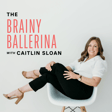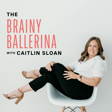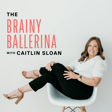
69. Listening to your Body with “The Therapist who Moves You”, Erica Hornthal
In this episode, I sit down with Erica Hornthal, licensed clinical professional counselor and board-certified dance/movement therapist, to explore the transformative power of movement for emotional and mental health. Known as “The Therapist Who Moves You”, Erica shares how dance and movement therapy can help us reconnect to our bodies, regulate the nervous system, and rewire patterns shaped by trauma, stress, and perfectionism.
We unpack misconceptions about dance therapy, the challenges dancers face in balancing technique with authenticity, and how to foster embodied practices for healthier, more resilient artistry. Erica also offers a simple grounding exercise you can try right now, and opens up about her books Body Aware and Body Talk, which provide practical tools for cultivating body awareness and self-expression.
Whether you’re a professional dancer, a teacher, or simply someone curious about somatic healing, this conversation will inspire you to embrace movement as more than performance - it’s a pathway to self-discovery, healing, and joy.
Key Points in this Episode:
- What dance/movement therapy is and how it differs from a dance class
- How our bodies hold unspoken stories, patterns, and emotions
- Why embodiment enhances artistic performance
- Ways to nurture creativity in young dancers without stifling expression
- Common misconceptions about dance therapy (hint: you don’t need to be a dancer to benefit!)
- How movement can support healing from trauma, anxiety, and burnout
- Practical advice for teachers on creating trauma-informed, person-first dance spaces
- A simple leaning exercise you can use anytime to feel grounded and supported
Connect with Erica:
WEBSITE: www.ericahornthal.com
INSTAGRAM: instagram.com/the.therapist.who.moves.you
Links and Resources:
Get 20% off your first order of ALOHA protein bars: https://aloha.com/BRAINYBALLERINA
Join the Brainy Ballerina Book Club
Let’s connect!
My WEBSITE: thebrainyballerina.com
INSTAGRAM: instagram.com/thebrainyballerina
1-1 CAREER MENTORING: book your complimentary career call
Questions/comments? Email me at caitlin@thebrainyballerina.com


